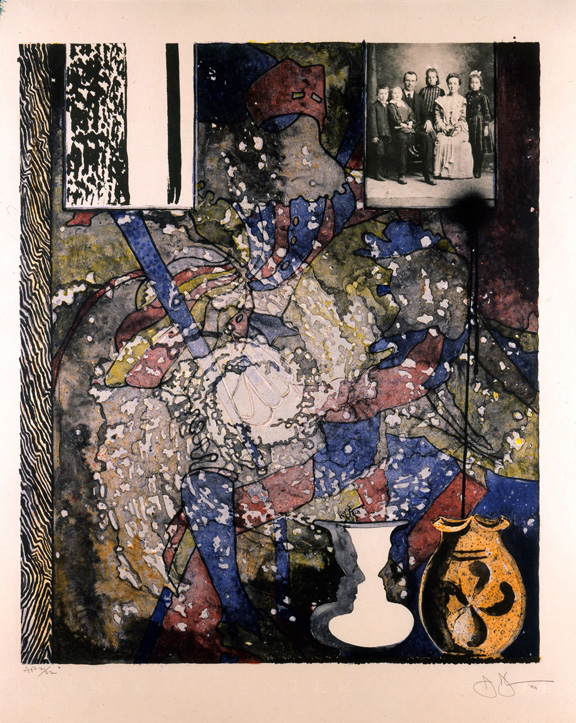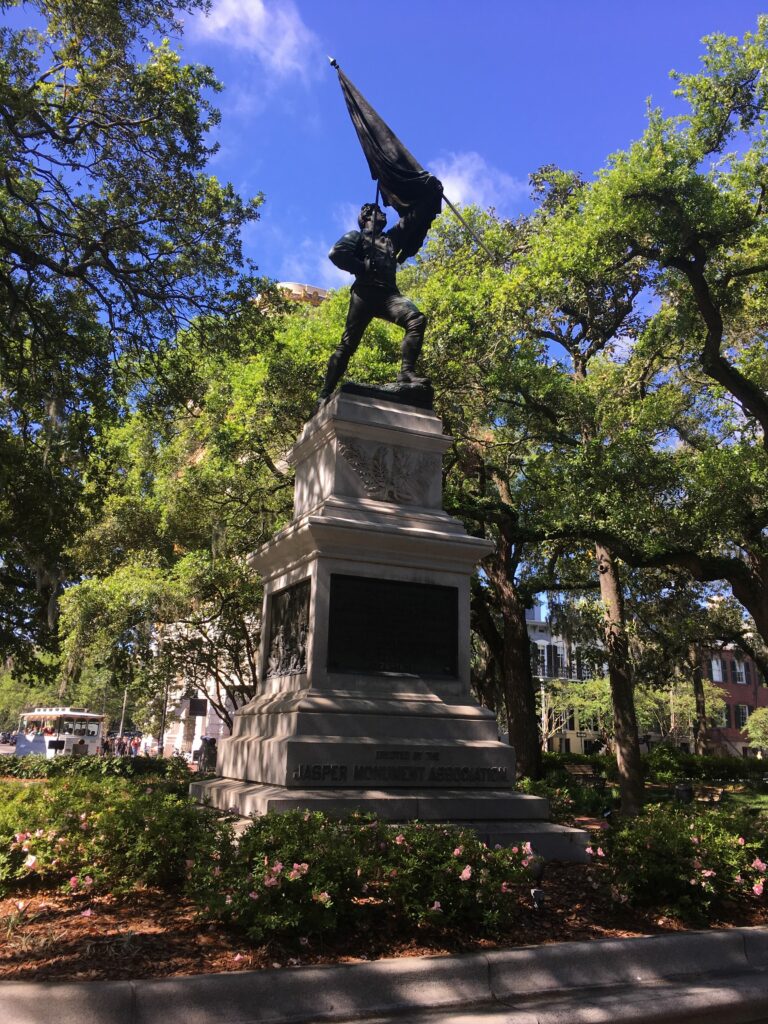For more than fifty years, Augusta-born artist Jasper Johns has set a standard for American art. Over the course of his long career, Johns has produced a complex and challenging body of work, receiving numerous awards and accolades, and exhibiting widely to great acclaim. Housed in major museum collections throughout the world, his work is found in Georgia at the Brenau University Galleries in Gainesville and at the Morris Museum of Art in Augusta.
Early Life and Career
Johns was born in Augusta on May 15, 1930, to Jean Riley and William Jasper Johns. (According to Johns, he and his father may have been named for William Jasper, a sergeant during the Revolutionary War [1775-83] who died in 1779 during the Siege of Savannah. Both the town of Jasper and Jasper County are named in the soldier’s honor.) His parents’ marriage was short-lived, and Johns spent his early childhood in Allendale, South Carolina, where he lived with his paternal grandparents. He spent one year with his mother in Columbia, South Carolina, and thereafter he spent several years living with his aunt Gladys in Lake Murray, South Carolina, twenty-two miles from Columbia. He completed high school in Sumter, South Carolina, where he once again lived with his mother.

Beginning in 1947 Johns studied art at the University of South Carolina in Columbia for three semesters but left to attend briefly the Parsons School of Design in New York City. He was drafted into the army in 1951 and stationed first in Fort Jackson, South Carolina, where he managed an art gallery, and later in Sendai, Japan.

In the summer of 1953 Johns returned to New York, where he and fellow southern artist Robert Rauschenberg designed window displays for department stores. During this time Johns experimented with painting over collage. He also began painting the American flag, which became a hallmark of his work, followed by paintings of numbers and targets. During a 1990 interview, in response to a question about the recurring image of the flag in his work, Johns recounted a childhood memory of his father showing him the statue of William Jasper in Savannah’s Madison Square, which depicts Jasper holding aloft the American flag.
Pop Art
Johns and Rauschenberg heralded the arrival of pop art, a movement that started during the mid-1950s, with work that used familiar objects in new, startling ways. A reaction against abstract expressionism, pop art paid homage to mass media, advertising, and consumer goods. The two artists also created a point of departure from the movement and allowed their work to evolve beyond it by adding visual puns and pictorial references. During this time, Johns collaborated with friends in many other fields as well, including composer John Cage and choreographer Merce Cunningham.
In 1957 the Jewish Museum in New York included a 1955 work by Johns, Green Target, in the exhibition Artists of the New York School: Second Generation, marking Johns’s first participation in a museum exhibition. His first solo exhibition was held in 1958 at the Leo Castelli Gallery in New York. The Museum of Modern Art purchased several of his works out of that show and one, Target with Four Faces, appeared on the January 1958 cover of ARTnews magazine. Three of his works were included in the Venice Biennale, and he was awarded a prize at the Carnegie International exhibition in Pittsburgh, Pennsylvania. The following year his first foreign solo exhibitions were held in Paris, France, and Milan, Italy. In New York Johns participated with Rauschenberg in artist Allan Kaprow’s Eighteen Happenings in Six Parts. He became increasingly interested in the work of artist Marcel Duchamp and began to make sculpture.
Evolving Influences and Direction
By 1960 Johns began to study lithography and make prints at Universal Limited Art Editions on Long Island, New York, achieving even greater versatility. Over the next decade his diverse work varied in terms of content, medium, and technique as he was inspired by surrealism, dadaism, and minimalism. He divided his time between homes and studios in New York and Edisto Beach, South Carolina.
In 1966 a fire destroyed his South Carolina house and studio. Despite the setback, he remained remarkably active and productive. A year later he became an artistic advisor to the Merce Cunningham Dance Company and remained in that position until 1978. He also executed his first etchings and produced an illustration, along with twenty-nine other artists, for a book of poems by Frank O’Hara, In Memory of My Feelings.
Beginning in 1972 Johns’s work became highly abstract, a transition marked by a series of crosshatch paintings. Over the next decade he continued to explore this style, and in the 1980s Johns’s work changed once more, becoming self-referential and deeply personal with the incorporation of artifacts, symbols, and memories of his childhood. His work at this time also contained autobiographical elements related to periods within his career. Among the accolades of this period was the Grand Prize at the Venice Biennale in 1988.
Johns moved to Sharon, Connecticut, in 1996 and established the Low Road Studio, where he produces prints and paintings, many of which remain untitled.
Works in Georgia
Upon turning sixty in 1990, Johns began to explore new themes in his work, incorporating layers of tracings, previously explored iconic images, autobiographical elements, and references to masterpieces that inspired him. One such piece, a collage lithograph known as American Center Paris, 1994 (1994), features a childhood photograph of his aunts Gladys and Eunice. In 1994 Johns donated the lithograph, as well as an explanatory diagram charting various elements of the collage, to Brenau University, of which both women were alumnae.
Johns’s affiliation with Brenau University began a few years before this donation, when the college mounted an exhibition, spearheaded by president John S. Burd and entitled Retrospective of Jasper Johns Prints from the Leo Castelli Collection, to celebrate the opening of the Simmons Visual Art Center in 1991. The exhibition featured ninety-two pieces, primarily lithographs, etchings, and screenprints, all on loan from Castelli’s private collection. Today the Brenau University Galleries’ collection includes, in addition to American Center Paris, two lithographs entitled Passages I (1966) and Passages II (circa 1966), as well as an etching entitled Leo, which was donated by Castelli’s son as part of a nine-print collection comprising various artists.
The Morris Museum of Art holds two prints by Johns, Scent (1975-76) and The Dutch Wives (1978). In 1997 the Savannah College of Art and Design in Savannah hosted an exhibition of Johns’s work entitled The Seasons, a fifty-piece collection including both paintings and sculptures.







